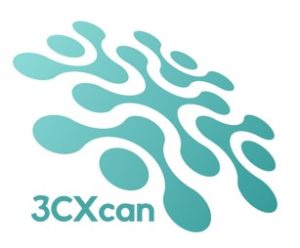Structural answers to organizational problems are very unlikely to succeed.
Division A people don’t collaborate with Division B people, so we create a new division C (which is A+B) and put everybody under the same roof. You will collaborate now! Or else! But A people still don’t talk to B people. We have given a structural answer (a new division) to a behavioural problem – lack of collaboration. Bad idea.
Reorganizing is often a management need, not an organizational need. It’s also a default management activity, highly visible, a sign that management ‘is doing something about it’.
After a crisis of some sort it is quite common to ‘learn from it’ and ‘solve for the future’ by ‘reviewing’ or changing the structure. It is often unclear whether ‘the structure’ had anything to do with the crisis or the problem in the first place.
But if leadership has run out of other ideas, a reorganization is always handy and a possibility. Common issues of trust, communications, collaboration, accountability, etc, are hardly solvable by structural responses. People will carry those issues with them to the new homes. Yet, this is well known but we keep doing it.
This ‘default answer’ is still very prominent in the organization.
Before ‘reorganizing’ to solve a problem, a proper analysis of the communication flow and knowledge flow should take place. We have tools for that. It’s called 3CXcan [1] which could reveal for example that a particular reorganization is not needed because the communication flow is adequate. However, perhaps, there are other cases where trust is poor, or knowledge transfer is blocked, and these are the real issues to tackle. It’s only after running 3CXcan that the logic of reshuffling homes can be tested. We have 3CXcan to help organizations do this.
In 2020 there is no room for automatic pilot ‘we will reorganize you’ as a solution to a behavioural problem. It’s lazy management.
Another thing that 3CXcan [1] could give you is a real sense of the magnitude of the problem. Entire divisional reorganizations have taken place because a couple of key individuals are the problem, not the entire system. How many times have I challenged: do you mean that if you removed John and Mary things would be very different? And how many times it has been acknowledged that in reality this was the case, it all came down to very particular individuals.
Without a handle on the behavioural DNA of the company and the dynamics of flow (influence, knowledge transfer, informal communication, formal communication) a reorganization is truly blind, an act of alfa-male-female reaction, a perhaps popular and populist reaction, but unlikely a solution.
It would be the difference between machine gun approach and keyhole surgery.
________________________________________________________________________________________________
Do you know your REAL organization?
The organization chart tells you who reports to whom but not much else. But, who is truly connected with whom?
For many years the need to understand formal and informal connections in organizations has been well understood. Now, we have turned organizational network science into real practice: we uncover your networks with no pain, efficiently, fast and with absolute confidentiality.
People will easily tell you where they get the information they need from. Sometimes they do this through informal channels that are not entirely visible. We can help you identify those channels.

3CXcan [1] provides a diagnosis of your formal and informal connections
3CXcan [1] uses organizational network science software called Cfinder Algorithm, a tool for network cluster (community) detection, to give you a profound understanding of your internal networks. With this data you can built effective solutions for your organizational challenges. It is a diagnostic, not an action driven tool and it:
◦ Provides a picture: of the formal and informal organization and how effectively both operate.
◦ Reveals: organizational connections from strong to weak, to ineffective and broken connection.
◦ Gains insight: on the specific solutions and interventions required.
◦ Identifies: the individuals that will leverage change more effectively (ie champions).
Note:
- This process is totally anonymous.
- No names are ever revealed (unless there is a specific agreement)
- The data base of findings is erased soon after the debriefing has taken place
To find out what the results from this process look like and how it can help your business – find out more. [1]
For a free virtual consultation or a short walk through our demo – contact us now.; [2]